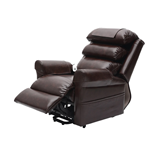The Determining the Cost of Paediatric and Perianal Crohn's Disease in New Zealand study found the total annual cost of paediatric Crohn's patients is $22.9 million. The cost of patients with perianal Crohn's disease, who develop fistulae and abscesses as part of the disease, is $35.3 million.
Crohn's disease is a type of inflammatory bowel disease (IBD). IBD is a chronic incurable disease that leads to inflammation of the gut and causes symptoms such as abdominal pain, diarrhoea, rectal bleeding and weight loss.
There are between 9000 and 10 000 people with IBD in New Zealand and paediatric and perianal Crohn's disease patients make up about 40 per cent of them.
If all patients with Crohn's disease were included in the study, annual costs would be at least $100 million per year, researchers estimate.
Crohn's disease patients who are diagnosed as children and those with perianal complications use higher health resources and personally incur higher costs than other IBD patients.
This study is the first in New Zealand to look at what IBD costs the country, sufferers and their families. It was published as part of the University of Otago, Christchurch’s summer studentship programme.
Costs were calculated by Economics Master's graduate Michaela Lion and supervised by Otago University, Christchurch, Associate Professors Richard Gearry and Andrew Day, and surgeon Tim Eglinton.
Prof Gearry says the study highlights that significant costs are borne by the patients and their families, not just the health system.
"Traditionally these sorts of studies only measure the direct costs of disease such as inpatient, drug and surgical costs. As a society, we must also consider the costs to people who live with this and other chronic diseases on a daily basis," Gearry says.
The study suggests more effective outpatient services and more cost-effective drugs could reduce hospital admissions for patients and lower costs.
The study tracked 50 patients over a year and monitored their GP visits, alternative health use and other data related to their treatment.
The total cost per paediatric patient was almost $13 000 for one year. The most significant cost was for hospital inpatient treatment ($4000) followed by pharmaceutical costs ($3300).
The total cost per patient with perianal Crohn's was more than $19,000 for one year. The most significant expense was pharmaceutical costs ($10 000) followed inpatient costs ($5000).
A common effect of the disease is the disruption of education or work. Both paediatric and perianal patients had an average of 21 days off work or school a year. In some circumstances parents or partners/spouses were required to care for them resulting in further time off work.
Many drugs taken by paediatric patients suppress their immune systems leading to increased susceptibility to colds and infections, and increased doctors' visits.
Nutritional supplements are commonly taken by paediatric patients to combat weight loss associated with the condition.











